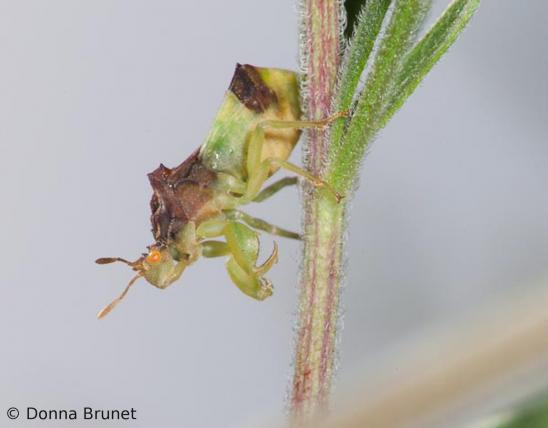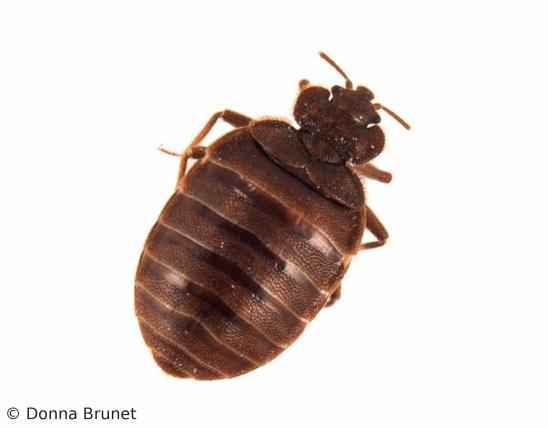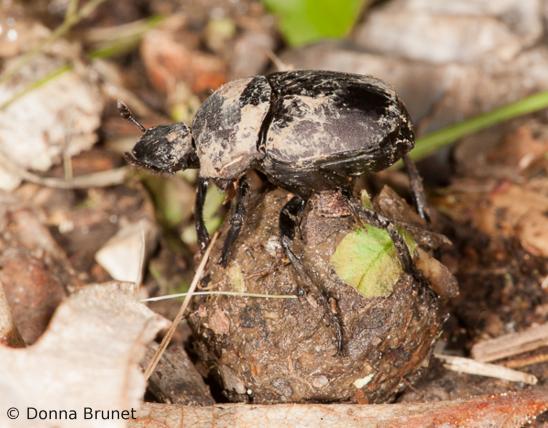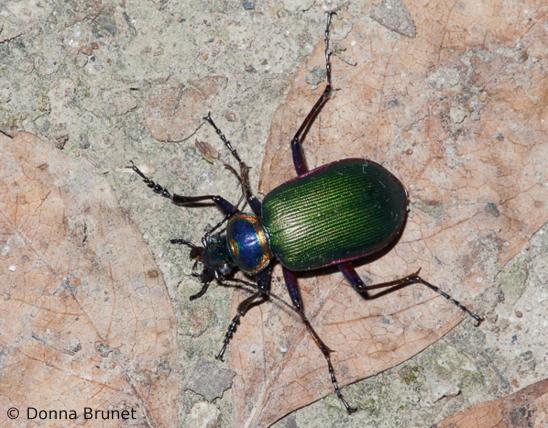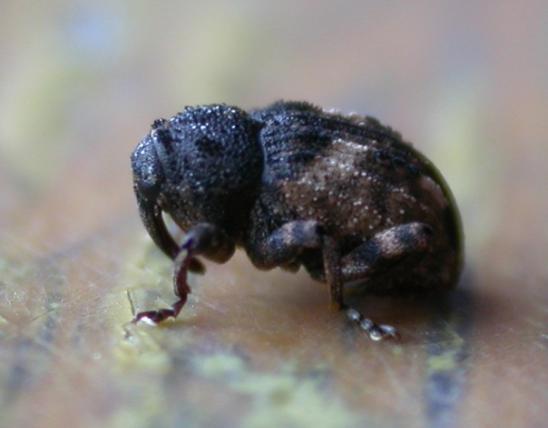
Toad bugs really do look like tiny toads as they hop around on the shores of streams, ponds, and lakes. They are dirt-colored tans, grays, and browns in cryptic camouflage patterns. Many of them have rough, warty, bumpy backs, helping them blend in against soil, sand, or rocky shorelines. The body is widely oval and flattened, except for protruding portions of the prothorax (shoulderlike plate). They have bulging eyes, short antennae that rest below the head, and raptorial (grasping) forelegs that are notably shorter than the hind pair of legs.
In North America north of Mexico, there are some 8 species, in 2 genera, in this family. Only one species is common in our area:
The big-eyed toad bug (Gelastocoris oculatus) occurs throughout North America, from Mexico into southern Canada. Its wide range of mottled browns, rusts, tans, grays, and blacks reflects its wide distribution in multiple habitats and substrates. The prothorax (shoulderlike plate) protrudes outward on the sides. The other North American member of this genus occurs only in the desert Southwest.
Similar species: There are hundreds of species of true bugs that have a squat, round shape. At least two families of these are also found in shoreline habitats:
- Velvety shore bugs (family Ochteridae) are dark blackish or bluish brown, often with spots, and look velvety. The body is oval, the eyes large and round, and the antennae very short. The front and middle pairs of legs are very similar; the front legs are not modified for grasping (nonraptorial). The long beak extends to the bases of the hind legs, or farther. Like toad bugs, they are predatory and live along shorelines, and they can jump.
- Shore bugs (family Saldidae) are similar to velvety shore bugs but have a shinier look and a more tapered oval shape. Dark brown or black overall, with white spots on the wings. They have narrower heads and longer, 4-segmented antennae. They, too, are predatory, but they prefer grassier shoreline habitats. They typically fly short distances when disturbed.
Length: ¼ to ½ inch (6 to 10 mm).
Statewide.
Habitat and Conservation
Toad bugs may walk rather rapidly, or they may hop, toadlike, along muddy, sandy, or rocky shorelines of streams or ponds.
Food
Toad bugs eat smaller insects by hopping onto them and grabbing them with their raptorial (grasping) forelegs. Like other true bugs, their mouthparts are modified into a kind of strawlike tube. This beak is used to pierce their prey, deliver a digestive enzyme that also subdues their quarry, and then suck the nutrients out of their bodies.
Life Cycle
Like other true bugs, toad bugs progress from eggs through a number of juvenile (nymph) stages; after the final molt they are winged, sexually mature adults. In the big-eyed toad bug species, females deposit eggs in mud or sand, or under stones, near the edge of water. Most eggs do not hatch until early summer. Growth and development of nymphs varies depending on prey availability. This species overwinters in the adult stage.
Human Connections
The family name, Gelastocoridae, means “laughing bug” or “ridiculous” or “funny bug” (gelasto means “laughing” in Greek). Somewhere, sometime, an entomologist was certainly amused by these minute, weird-looking, bouncy insects. When you see them, you may decide that they’re cute, as well.
Toad bugs are a challenge to find and photograph, since cameras with automatic focus have trouble “seeing” them, too!
Ecosystem Connections
Toad bugs, being predators, consume smaller insects. Then, being small insects themselves, may be preyed upon by larger animals, including birds and fish. Thus they pass nutrients, originally manufactured in living plants, up the food chain to larger animals and to animals that need animal protein to survive.
Toad bugs’ incredibly convincing camouflage is a sign that visual predators must seek them out. Indeed, until they move (or move onto a surface their coloration doesn’t match), toad bugs are virtually invisible.




























